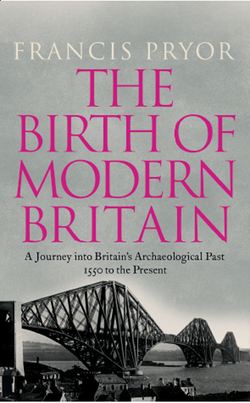Читать книгу The Birth of Modern Britain: A Journey into Britain’s Archaeological Past: 1550 to the Present - Francis Pryor - Страница 6
ОглавлениеText Illustrations and Maps
Three maps of Shapwick, Somerset. From Gerrard and Aston, The Shapwick Project. Somerset. A Rural Landscape Explored (2007). With kind permission of Professor Chris Gerrard.
Map showing the farming regions of early modern England (1500–1750). From Thirsk, England’s Agricultural Regions and Agrarian History, 1500–1750(1987)
Survey of the Buckinghamshire village of Akeley, based on an enclosure map of 1794. From Jones and Page, Medieval Villages in an English Landscape (2006)
Farm buildings from a design by J. B. Denton of 1879. From the Royal Commission on Historical Monuments 1997, p. 153
Map showing the distribution of landscape parks in East Anglia in the late eighteenth century. From Tom Williamson, ‘Designed Landscapes: The Regional Dimension’, Landscapes, Vol. 5, No. 2, p. 18 (2004). With kind permission of Professor Tom Williamson.
Two idealised plans showing the layout of typical model or estate farms in England around 1750–1800 and 1800–1840. From Wade Martins, The English Model Farm (2002), fig. 1
Two idealised plans showing the layout of typical model or estate farms in England around 1840–1860 and 1860–1900. From Wade Martins, The English Model Farm (2002), fig. 1
General plan of Aston Hall, Birmingham. From Post-Medieval Archaeology, Vol. 42, Pt 1, p. 103 (2008)
Map showing the location of eighty-one planned villages erected between c. 1730 and 1855 in south-west Scotland (Dumfries and Galloway). From Philip, Landscapes, Vol. 6, No. 1, p. 89 (2005)
Map of the drove roads of Scotland. From Haldane, The Drove Roads of Scotland (2008)
The principal long-distance routes in England and Wales in the seventeenth century, prior to the turnpikes. From Wright, Turnpike Roads (1992)
Map of the Grand Union (earlier the Grand Junction) Canal in Northamptonshire
Excavated traces of wooden railway (or ‘waggonway’) lines. Illustration reproduced courtesy of Wrexham County Borough Council.
Map showing the thirty-five major historic towns and cities of England. From Thomas, ‘Mapping the Towns’, Landscapes, Vol. 7, No. 1 (2006), p. 73
Map showing how space within London was organised around 1750. From Short, The South-East, p. 175
Plan of the archaeological evidence for the Rose theatre. From Current Archaeology, No. 124, p. 186
Excavations at Wednesbury Forge, West Midlands. From Belford, British Archaeology, No. 107, p. 33
The Upper Forge at Coalbrookdale, Shropshire. From Belford, British Archaeology, No. 107, p. 34
Exterior view of a Manchester cellar house in Victorian times. From Miller and Wild, A & G Murray and the Cotton Mills of Ancoats, p. 31 (2007)
Flow diagram illustrating the production of cotton textiles. From Miller and Wild, A & G Murray and the Cotton Mills of Ancoats, p. 162 (2007)
Plan showing the organisation of the industrial landscape around the entrance to the Park Level Lead Mine at Killhope, Co. Durham. From Forbes, Lead and Life at Killhope (1987), p. 19
Map showing the development of urban areas (black) and Wombwell Wood (stippled) in the town of Wombwell, South Yorkshire. From Hey and Rodwell, ‘Wombwell’, Landscapes, Vol. 7, No. 2 (2006), p. 25
Drawing of the constructional details of the traditional ‘hovel’ type of updraught bottle kiln. From Post-Med. Arch., Vol. 42, Pt 1, p. 205 (2008)
Plan of the purpose-built grounds surrounding the Quaker asylum at Brislington House, Bristol. From Rutherford, Landscapes, Vol. 5, No. 2 (2004), p. 30
Outline drawing of a later nineteenth century triangular blue cotton neckerchief. From Oleksy, Post-Med. Arch., Vol. 42, Pt 2, p. 293
Hand-carved model boat found in a large void beneath Court 3, Parliament House, Edinburgh. From Oleksy, Post-Med. Arch., Vol. 42, Pt 2, p. 296 (2008)
Map of Harwich Basin in the early eighteenth century. From Post-Med. Arch., Vol. 42, Pt 2, p. 232
The defensive landscape at Landguard Fort, near Harwich, Suffolk. From Meredith, Post-Med. Arch., Vol. 42, Pt 2, p. 235 (2008)
A composite plan, based on contemporary sources showing the main areas of activity at the Norman Cross (Peterborough) ‘Depot’, or prisoner-of-war camp
While every effort has been made to trace the owners of copyright material reproduced herein, the publishers would like to apologise for any omissions and would be pleased to incorporate missing acknowledgements in future editions.
